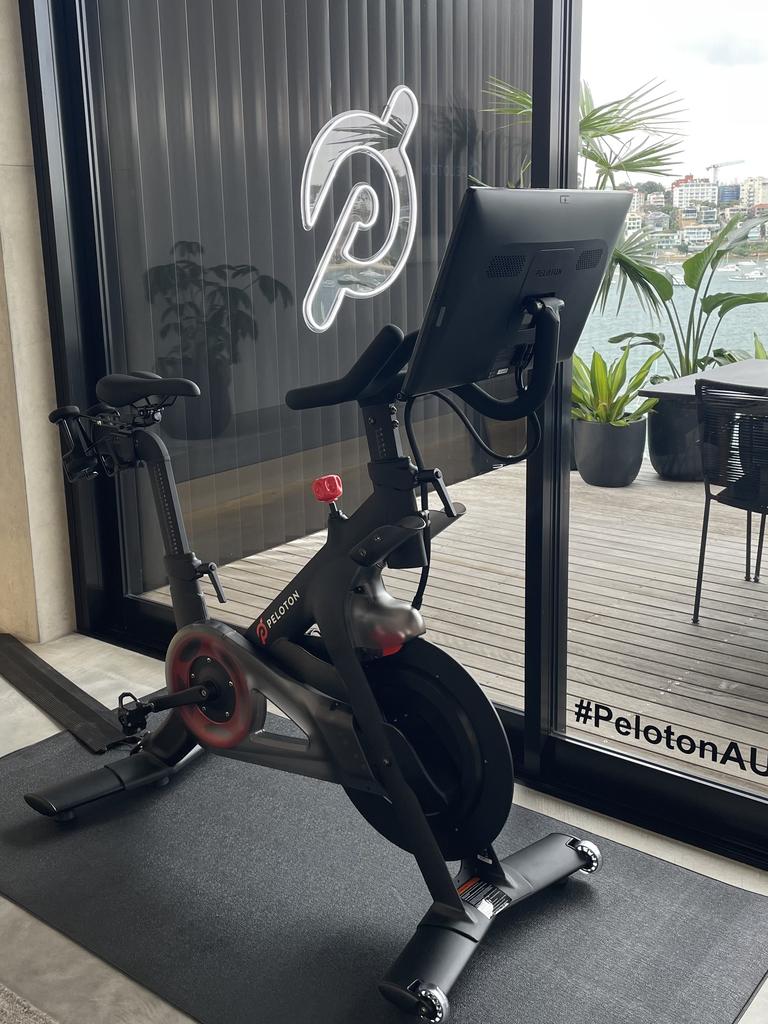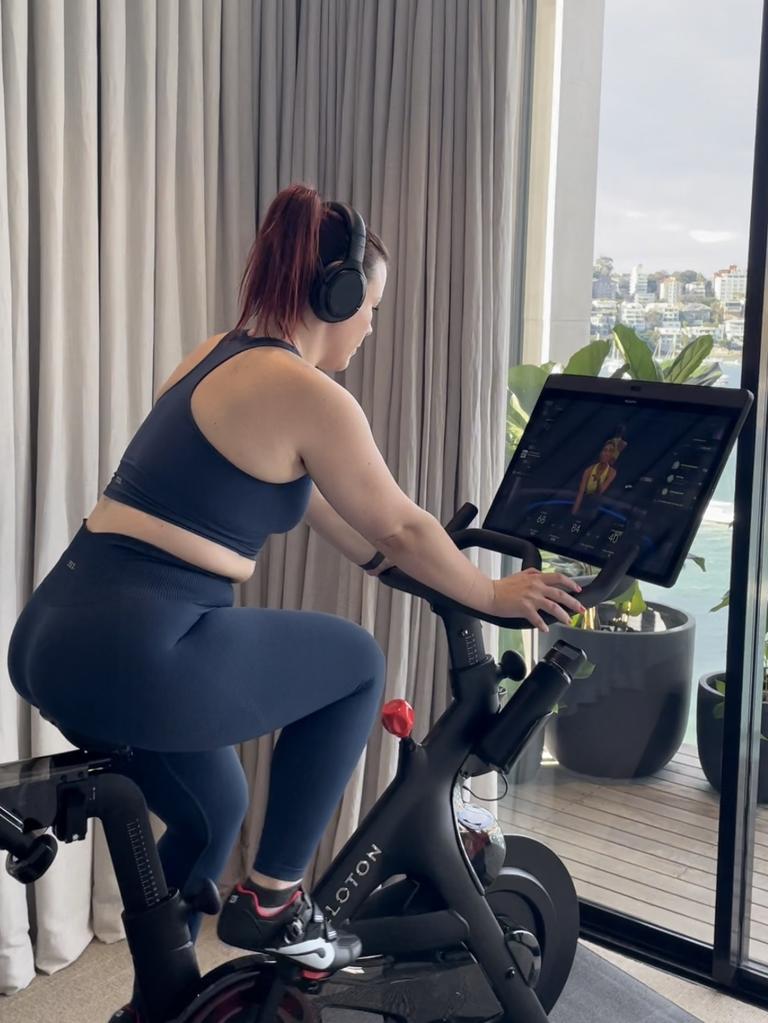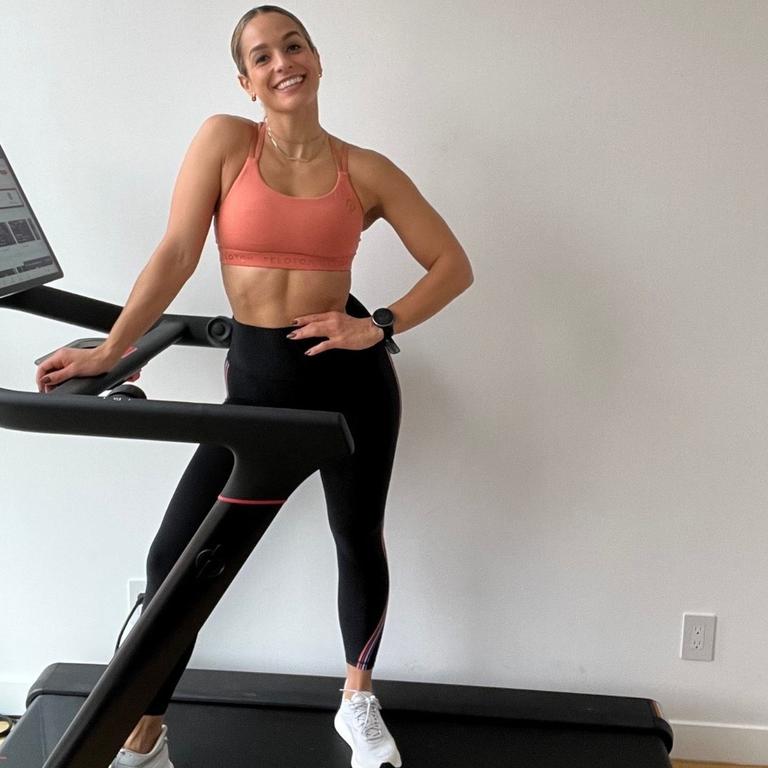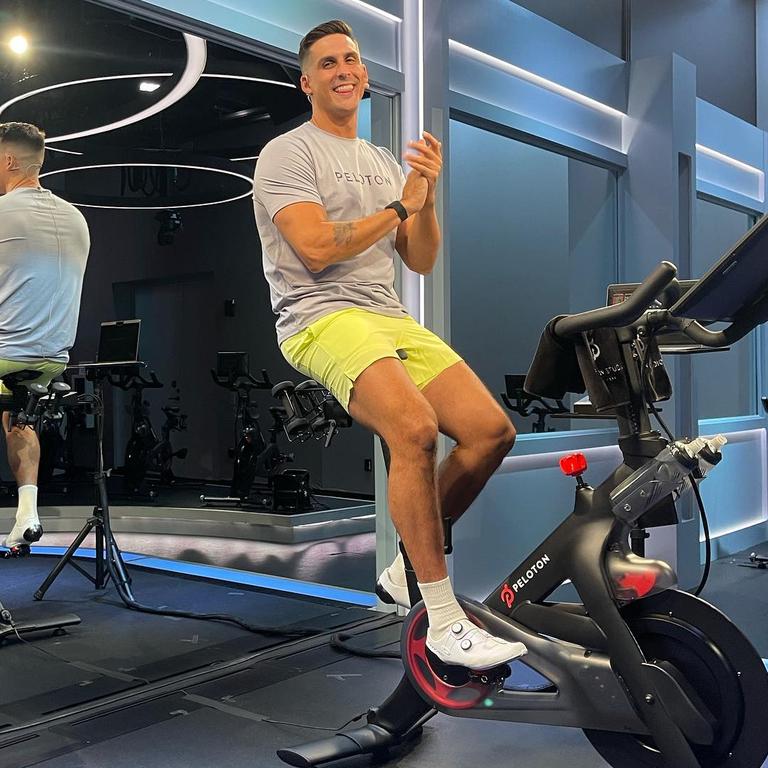Peloton Australia Review: Gruelling reality of cult fitness program
It’s a fitness program that has become a cultural phenomenon – but is it any good? Judging from the state of this selfie, we’d say so.
During Sydney’s lockdown last year, I joined a cult.
While it might sound dramatic, it’s not the sort of group I know your mind instantly imagined. Instead it’s one that helps people become healthier and fitter – all without ever leaving the confines of our own homes.
The cult in question is Peloton, a US fitness platform that launched in Australia in July, just before the Delta variant plunged many of us into lengthy lockdowns.
The American company started up in 2012 with the help of a Kickstarter campaign and offers members access to classes through its app. But unlike similar fitness offerings, it also sells equipment, giving users the option to sweat it out on bikes and treadmills led by live instructors.
Peloton Australia’s country manager Karen Lawson said since arriving on our shores it has amassed almost 4000 Aussie members who have joined the brand’s 6.2 million users globally, from the US, Canada, UK and Germany.

“It has been exciting to see our Australian community take off,” she told news.com.au, revealing the Australians had “jumped feet first into building and forming a passionate, local community”.
She also said it’s the community aspect that really “sets Peloton apart” from its competitors. The brand’s mantra “Together We Go Far” is even a cheesy nod to its “fitness tribe” who are as active on social media as they are at home.
“Everyone is welcome in the Peloton Australia family, regardless of age, fitness level, location or background,” Karen said.
So when the second Sydney lockdown occurred, just weeks after the brand launched, I decided to take the plunge.
Like many Aussies, the first wave of the pandemic hit me hard. It was a mentally exhausting time and as a result, I had nothing left for fitness. I gained weight but what was more concerning, I felt awful.
When life started moving again, it took me months to get back into the groove – so this time, I didn’t want to find myself back at square one.
However, I needed a stiff drink when I discovered the prices.


Now, I knew the prices were steep. But I have to admit, I was taken aback by the initial outlay. Especially as a single person surviving on one income.
The Peloton Bike and Bike+ costs $2295 and $3695 respectively and both require an ongoing $59-a-month membership which gives access to all content and creates accounts for the entire household.
The brand’s treadmills are currently not available in Australia.
After recovering from the shock of the price, I opted for the Bike+ because the screen was flexible, and quickly discovered it was more than a fancy spin bike.
The platform offers an enormous catalogue of content that I was able to access through the bike’s screen as well as the app on my phone.
These included spin and treadmill workouts along with HIIT and strength sessions. There was also yoga, pilates and dance classes.
Audio-only options were also available enabling running and walking workouts outside as well as guided meditations and stretching classes.
Having such a huge array of choice helped justify the initial outlay, though its worth noting, Aussies can access the app without purchasing a bike for just $16.99-a-month. So you could follow a workout on a different bike at home, or even in a gym, if you really wanted to.
The sheer volume of content, along with more than 50 of the “word’s best instructors”, is something Karen said the company was extremely proud of.

“We are so lucky to have a diverse group of Peloton instructors who come from different backgrounds, each bringing their own unique story and perspective to the platform,” she said.
“The relatability and authenticity our instructors share with members in their classes is a key component in creating those meaningful connections you often hear about.
“If you are working out with a favourite Peloton instructor a few times a week, you really get to know them.”
Karen’s not wrong about that. After my first ever class with instructor Cody Rigsby, I found myself following him on Instagram and in the process, realising just how huge the “Peloton cult” – as it has been playfully dubbed – is.
Cody has more than one million followers on social media and recently competed in the US version of Dancing With The Stars.
Yet here he was, kicking my ass, albeit through a computer screen.

And boy do the spin workouts hurt. They’re seriously painful, but in the ‘I can’t feel my lungs, this must be working’ kind of way.
And brace yourselves for the sweat. The stuff was dripping off me – but while it was disgusting, it was highly rewarding.
If I’m brutally honest, I thought a home workout would be a walk in the park compared to one in a gym. After all, you can’t slack off in front of a real-life instructor.
But Peloton has thought of everything to keep you moving.
You can choose a setting which adjusts the resistance on the bike to match what the instructor is dishing out – and each workout is completed to a dedicated playlist, so you can pick a workout that suits your musical tastes, which if you’re like me, is more likely to keep you motivated.

There’s also a leaderboard. This is great for people who are competitive and doubles as a way of socialising with your classmates if you’re not, as a quick tap on a profile will send them a virtual high five.
So let’s bust the myth that a Peloton workout is “easy”, because it’s not. Most descriptions I’ve read from users call it “absolutely killer” and I couldn’t agree more.
Peloton workouts are killer
— Rob (@_R00BY) January 19, 2022
Peloton has always provided killer workouts //
— Mr Mun (@mr_mun_) December 10, 2021
You want a killer workout? Hop on a peloton bike and watch your legs burn in a matter of minutes. 😳🔥😅#Pelotonmom
— Lexi Corona (@thelexicorona) October 15, 2021
Even when you’re not on the bike, you can’t slack off. I’ve found myself doing guided walks at a much faster pace than my normal stroll thanks to the encouraging words coming through my earphones.
And good luck trying to take it easy in a HIIT or strength class – there’s no time to breathe, let alone complain.
One thing that has surprised me was how often I use the app. On days when strapping in for a 45-minute spin class seems like a slog, I like having the option to do something less hectic.
Though, I have to admit, my favourite workout option is “bike bootcamp”, a mix of cardio and strength training in one class that’s definitely not for the faint-hearted.
You kick off on the bike, smoke your legs out, then move to your floor where you perform some sort of weight training with dumbbells. Then you get back on the bike and do it all over again.
It’s honestly pretty bonkers, but hey, I guarantee you’ll feel amazing afterwards.
All in all, I’m hugely impressed with the Peloton, and have no regret over my decision to splash out. However I do wish there were more “live” classes for Australians.
At the moment, classes are recorded in the brand’s London and New York studios, mostly at times that work in those time zones.
Part of the draw, as Karen said, is the community – which Australians don’t really get the chance to interact with as much as our Peloton neighbours.
To help with this, “encore” classes are being run at times better suited to our time zones. These are essentially replays of previous live classes, but they are publicised in the Australian members group, encouraging locals to log into the same class at the same time.
You won’t get a shout out from your favourite instructor, but you’ll be able to virtually high-five other Aussie members which is nice. We’d still like to see more inclusion in the community as a whole though – please make it happen Peloton.
Continue the conversation @RebekahScanlan | rebekah.scanlan@news.com.au






